Address
304 North Cardinal
St. Dorchester Center, MA 02124
Work Hours
Monday to Friday: 7AM - 7PM
Weekend: 10AM - 5PM
Address
304 North Cardinal
St. Dorchester Center, MA 02124
Work Hours
Monday to Friday: 7AM - 7PM
Weekend: 10AM - 5PM

In a world where convenience meets health consciousness, the kitchen has become a battleground for innovation. As we navigate the modern culinary landscape, one appliance has emerged as a silent game-changer: the air fryer. This marvel of modern technology has not only transformed the way we cook but has also paved the way for a new era of kitchen appliances. Join us as we delve into the evolution of kitchen technology and explore how the automated air fryer assembly line is revolutionizing our homes and diets.
The kitchen, once a mere backdrop for the preparation of meals, has transformed into a technological playground where innovation meets culinary desires. Over the years, kitchen technology has evolved at a remarkable pace, reshaping how we interact with our daily food preparation. From the rudimentary stone hearths of ancient times to the sleek, smart appliances of today, the journey of kitchen technology is a testament to human ingenuity and a quest for convenience and efficiency.
In the earliest days, cooking was a labor-intensive task, reliant on open flames and rudimentary tools. Fireplaces, stoves, and ovens were developed, each a significant step towards making cooking less perilous and more manageable. The introduction of the gas stove in the 19th century marked a shift towards a more controlled and precise cooking method, offering a cleaner burn and better temperature regulation.
As the 20th century rolled in, kitchen appliances began to emerge, each designed to ease the workload and streamline meal preparation. The refrigerator, which made its debut in the early 20th century, became a staple in modern homes, extending the life of perishable foods. The electric mixer, blender, and food processor followed suit, freeing up time and allowing for more complex culinary creations.
The mid-20th century saw the rise of the countertop appliance, with devices like toasters, blenders, and juicers becoming commonplace. These small wonders were a symbol of the post-war economic boom and a sign that the kitchen was becoming a space not just for sustenance, but for entertainment and innovation.
Enter the 21st century, and the kitchen has become a digital battleground of sorts, with smart appliances leading the charge. From refrigerators that can track your inventory and suggest recipes to stoves that can be controlled via smartphone, the kitchen is now an ecosystem of connectivity and convenience.
The evolution of kitchen technology has been driven by a few key factors:
1. Efficiency and Convenience: Appliances are now designed to save time and energy, making meal preparation quicker and easier. Features like automatic timers, programmable settings, and self-cleaning capabilities have made cooking more user-friendly.
2. Health and Wellness: With a growing awareness of health and wellness, kitchen appliances have evolved to cater to more nutritious and low-fat cooking methods. Air fryers, for instance, have gained popularity for their ability to mimic the taste of fried foods with less oil, aligning with modern dietary trends.
3. Environmental Concerns: The kitchen is no longer just about personal convenience; it’s also about sustainability. Appliances that use less energy and have recyclable materials are becoming more common, reflecting a broader environmental consciousness.
4. Technological Integration: Smart appliances are now equipped with sensors, AI, and connectivity, allowing them to learn and adapt to user habits. This level of personalization was unimaginable just a few decades ago.
The evolution of kitchen technology has also been influenced by cultural shifts and global trends. The introduction of international cuisines has spurred the creation of specialized appliances like rice cookers and pasta makers. The rise of cooking as a hobby has also played a role, with appliances designed to cater to both amateur chefs and professional cooks.
As we look to the future, it’s clear that the kitchen will continue to evolve. We can expect to see more intuitive design, greater emphasis on sustainability, and perhaps even appliances that can predict our needs before we even realize them. The kitchen, once a space bound by the constraints of traditional cooking methods, is now a dynamic, forward-thinking space that reflects our ever-changing lives.

The air fryer has emerged as a true game-changer in the kitchen appliance landscape, transforming the way we cook and perceive healthy eating. Once a niche product, it has now become a staple in many homes, reshaping culinary trends and preferences.
Once a distant relative to the deep fryer, the air fryer has shed its greasy reputation and embraced a healthier cooking method. By utilizing hot air to circulate around the food, it achieves a crispy outer layer without the need for excessive oil. This shift towards healthier cooking options has been met with a wave of enthusiasm from health-conscious consumers seeking to indulge in their favorite fried foods without the guilt.
The air fryer’s versatility is another key factor in its popularity. It can be used to cook a wide array of foods, from crispy French fries to succulent chicken wings, with minimal effort and cleanup. This multi-functional appliance has become a favorite among busy families and individuals looking for a quick and easy way to prepare delicious meals without sacrificing nutritional value.
What sets the air fryer apart from other cooking methods is its ability to retain the natural flavors and textures of the food. Unlike traditional frying, which can leave a greasy or overly cooked taste, the air fryer preserves the true essence of the ingredients. This not only enhances the taste but also allows for greater creativity in the kitchen, as users can experiment with different spices and herbs to create unique and personalized dishes.
In addition to its health benefits and versatility, the air fryer has also become a symbol of convenience. With its compact size and ease of use, it fits seamlessly into any kitchen setup, whether it’s a small apartment or a spacious home. The intuitive design, often featuring simple buttons and a digital timer, makes it accessible to users of all ages and cooking skills.
The rise of the air fryer has also sparked a renewed interest in traditional cooking techniques. As consumers become more aware of the health impacts of their diets, they are seeking out cooking methods that align with their values. The air fryer’s ability to mimic the taste and texture of fried foods while being a healthier alternative has made it a bridge between old and new culinary traditions.
Furthermore, the air fryer has been embraced by chefs and culinary enthusiasts alike. Chefs have found new ways to incorporate this appliance into their menus, offering patrons dishes that are both indulgent and nutritious. This has opened up a world of possibilities for creative chefs to push the boundaries of their culinary skills while catering to the evolving demands of their customers.
In recent years, the air fryer has also benefited from technological advancements. Features such as adjustable temperature controls, non-stick surfaces, and automatic shut-off have made it even more user-friendly. These innovations have further contributed to the air fryer’s popularity, as consumers seek appliances that not only enhance their cooking experience but also offer peace of mind.
The air fryer’s impact on the kitchen appliance market is undeniable. It has not only changed the way we cook but has also influenced the way manufacturers design and market their products. Companies are now focusing on developing air fryers with additional functions, such as toasting, baking, and even roasting, to cater to the diverse needs of consumers.
Moreover, the air fryer has played a significant role in the rise of home cooking culture. With the increasing popularity of cooking shows and social media platforms dedicated to food and cooking, more people are exploring their culinary interests. The air fryer has become an essential tool for these aspiring chefs, providing them with a gateway to experiment with different recipes and techniques.
In conclusion, the air fryer has revolutionized the kitchen landscape by offering a healthier, more versatile, and convenient alternative to traditional frying methods. Its ability to retain the natural flavors and textures of food, combined with its ease of use and innovative features, has made it a staple in many kitchens around the world. As culinary trends continue to evolve, the air fryer is poised to remain a game-changer, inspiring new culinary adventures and fostering a healthier lifestyle for its users.
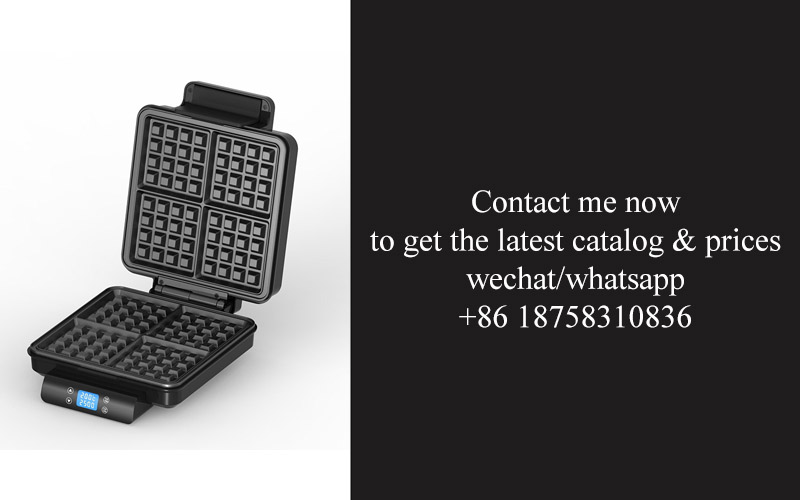
The automated air fryer assembly line represents a marvel of modern manufacturing, where precision and efficiency converge to produce one of the most sought-after kitchen appliances. This line is a testament to the advancements in robotics and automation technology that have reshaped the landscape of manufacturing across various industries.
In the heart of the assembly line, a series of meticulously designed machines work in harmony to transform raw materials into sleek, ready-to-use air fryers. The process begins with the arrival of components like the heating element, fan, basket, and electronic controls, all of which are carefully inspected for quality and functionality.
The first step in the assembly involves the placement of the heating element, a crucial component that ensures the air fryer’s ability to cook food at high temperatures. Automated robots, equipped with precision tools, meticulously secure the heating element to the fryer’s body, ensuring a perfect fit that guarantees optimal performance.
Next, the fan assembly is integrated into the air fryer. This part of the process requires the use of advanced robotic arms that can rotate and adjust the fryer to fit the fan into place with pinpoint accuracy. The fan is essential for distributing hot air evenly around the food, which is the key to the air fryer’s healthful cooking method.
The basket is then attached to the fryer, a task that demands both strength and precision. Specialized robots grip the basket securely and align it with the fryer’s body, ensuring that it can be easily inserted and removed for cleaning. The basket’s design is crucial for the air fryer’s functionality, as it must allow for the proper circulation of air to achieve the desired crispy texture on the outside of the food.
With the structural components in place, the assembly line moves on to the installation of the electronic controls. This is a highly sensitive process, as the controls must be programmed to operate the air fryer safely and efficiently. Automated machines apply heat shrink tubing to protect the wiring and secure the electronic components, all while maintaining a consistent and reliable connection.
The assembly line is also equipped with quality control stations at various points. These stations use high-tech sensors and imaging systems to check each air fryer for defects, such as misaligned components or loose connections. If a defect is detected, the line automatically halts, and a human operator is notified to address the issue, ensuring that only perfect products proceed to the next stage.
Once the air fryer has passed the quality control checks, it moves to the painting and finishing stage. Automated spray guns apply a thin, even coat of paint to the fryer’s exterior, which is then cured under controlled heat to ensure durability and resistance to chipping. This process is repeated for different colors and finishes, all without the need for manual intervention.
The final stages of the assembly line involve the installation of the power cord and the packaging of the air fryer. Automated machines thread the cord through the appropriate holes and secure it to the fryer, while another robot seals the packaging with precision. Each air fryer is then placed into its retail box, ready for shipment to stores and consumers.
Throughout the entire process, the automated air fryer assembly line is managed by a central control system that monitors and adjusts the operations in real-time. This system can predict maintenance needs, optimize production schedules, and even communicate with suppliers to ensure a steady flow of components.
The result of this sophisticated assembly line is a high-quality air fryer that is produced with minimal waste and maximum efficiency. It’s a prime example of how automation can not only streamline manufacturing but also improve the end product, making the air fryer not just a kitchen gadget, but a game-changer in the world of cooking and healthy living.
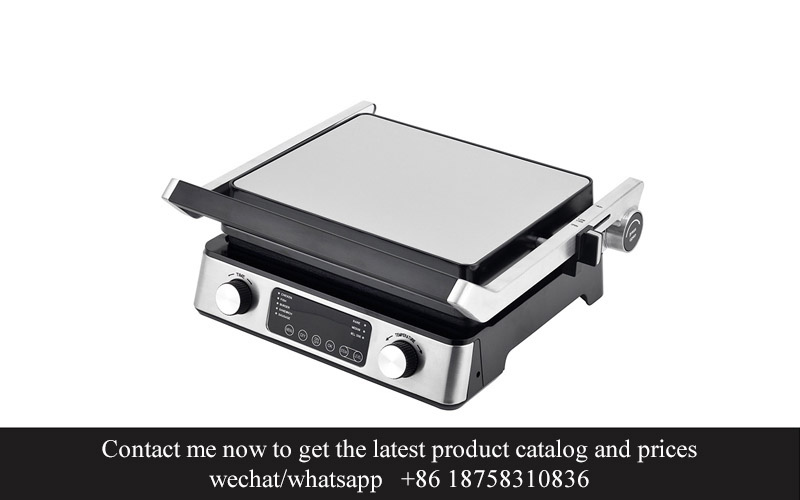
The landscape of kitchen appliance manufacturing has seen a remarkable transformation with the advent of automated assembly lines. These lines are not just about speeding up production; they’re about revolutionizing the quality and efficiency of the end product. Here’s a closer look at the innovations that have made the automated assembly line for air fryers a game-changer.
In the realm of automation, precision is paramount. The assembly of an air fryer, with its intricate components, requires a high degree of accuracy. Innovations in robotics have led to the development of sophisticated machines that can handle tasks with the precision of a human hand. These robots are programmed to perform delicate tasks, such as placing electronic components or securing parts with precision, ensuring that every air fryer that rolls off the line meets the highest standards.
The integration of advanced sensors and vision systems has been a pivotal innovation. These systems enable the assembly line to inspect and verify the quality of each part and assembly in real-time. High-resolution cameras can detect even the smallest defects, from misaligned components to surface imperfections, and can immediately halt the process if an issue is detected, preventing defective products from moving forward.
Automation has also brought about significant improvements in the handling of materials. Automated feeding systems ensure that parts are delivered to the assembly line at the exact moment they are needed, reducing waste and ensuring a continuous flow of production. These systems are designed to be adaptable, capable of handling a variety of materials and part sizes, making them versatile for different models of air fryers.
Energy efficiency is another area where innovations have made a substantial impact. Modern automated assembly lines are equipped with energy-saving technologies that reduce the overall energy consumption of the manufacturing process. From LED lighting in work areas to energy-efficient motors in machinery, these innovations help to lower operational costs and reduce the environmental footprint of the production process.
The integration of software solutions has been a game-changer in the management of automated assembly lines. Advanced control systems and software platforms allow for seamless communication between different stages of the production process. This integration enables predictive maintenance, where the system can anticipate and schedule maintenance activities to prevent downtime and ensure that the line runs smoothly.
In terms of ergonomics, innovations in the design of assembly stations have made significant strides. Operators are now able to work in environments that are less physically demanding, with adjustable workbenches and ergonomic tools that reduce the risk of repetitive strain injuries. These innovations not only improve the well-being of the workforce but also increase productivity by reducing the time and effort required for manual tasks.
Customization is another area where automation has excelled. The ability to quickly switch between different models or configurations of air fryers has become possible thanks to modular assembly systems. These systems can be reconfigured to accommodate changes in design or features, allowing manufacturers to respond swiftly to market demands and consumer preferences.
The use of smart tools and augmented reality (AR) in the assembly process has also become more prevalent. Smart tools provide real-time feedback to operators, guiding them through complex tasks with precision. AR overlays can display instructions, diagrams, and even simulate the placement of parts, making the assembly process more intuitive and reducing the likelihood of errors.
In the realm of quality control, the adoption of automated testing equipment has been transformative. These systems can perform a wide range of tests on completed air fryers, from functional tests to safety checks, ensuring that every unit meets the required standards before it leaves the factory.
Finally, the integration of data analytics and the Internet of Things (IoT) has provided manufacturers with unprecedented insights into their production processes. Real-time data collection and analysis allow for continuous improvement, as manufacturers can identify bottlenecks, inefficiencies, and areas for innovation with greater ease.
In summary, the innovations in automated assembly lines for air fryers have not only increased efficiency and quality but have also created a more sustainable and adaptable manufacturing environment. As technology continues to evolve, the potential for further advancements in this field is vast, promising even more innovative and efficient ways to bring high-quality kitchen appliances to market.
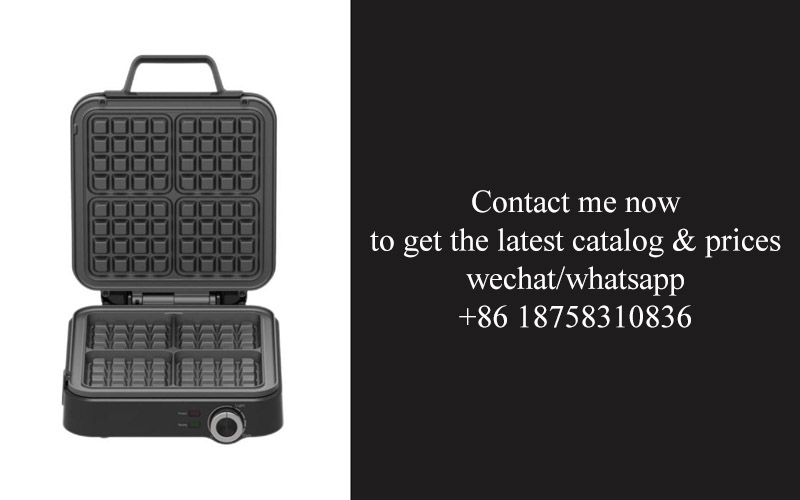
In the realm of kitchen appliances, the advent of the automated air fryer assembly line has marked a significant shift in the manufacturing landscape. This transformation is not just about speeding up production; it’s about revolutionizing the quality, consistency, and efficiency of the end product. Here are some of the key benefits that this technological leap brings to the table:
The Precision of RoboticsRobotic systems in the assembly line ensure that every component is handled with utmost precision. Unlike human workers, robots do not suffer from fatigue, and their movements are calibrated to the millimeter, reducing the likelihood of errors. This precision translates to a higher quality product, as each air fryer is assembled with the same level of care and accuracy.
Increased Production SpeedAutomation significantly boosts production speeds. With the right robotics and machinery in place, assembly lines can churn out air fryers at a rate that far exceeds manual labor. This increased speed not only meets the demand for quick production but also allows for scalability, making it easier for manufacturers to respond to market trends and customer needs without delay.
Cost EfficiencyWhile the initial investment in an automated assembly line can be substantial, the long-term cost savings are substantial. By reducing the need for a large workforce and minimizing defects, manufacturers can cut down on labor costs and waste. Additionally, the consistent output from an automated line can lead to economies of scale, lowering the cost per unit over time.
Enhanced Quality ControlWith automation comes the ability to implement rigorous quality control measures. Sensors and automated testing equipment can be integrated into the assembly process to inspect each component and the final product for defects. This proactive approach to quality control ensures that only the highest standard of air fryers reaches the consumer.
Reduced Environmental ImpactThe automated assembly line not only reduces waste but also has a smaller environmental footprint. By streamlining the production process and minimizing energy consumption, manufacturers can reduce their carbon emissions. The use of energy-efficient robotics and optimized manufacturing processes contributes to a greener and more sustainable approach to kitchen appliance production.
Improved Work EnvironmentAutomation can significantly improve the working conditions for human employees. By automating repetitive and physically demanding tasks, workers can be reassigned to more engaging and less harmful roles. This shift can lead to a more comfortable work environment, reduced workplace injuries, and increased job satisfaction.
Flexibility and AdaptabilityAutomated systems are highly adaptable to changes in the product design or specifications. If a new feature is introduced or an existing one is modified, the assembly line can be reprogrammed relatively quickly to accommodate these changes. This flexibility allows manufacturers to stay ahead of the curve in a rapidly evolving market.
Customization and PersonalizationAs the technology advances, automated assembly lines are becoming more capable of handling customization and personalization. This means that consumers could soon see a wider range of air fryer models with unique features tailored to their specific needs and preferences.
Continuous ImprovementWith automated systems, manufacturers can collect vast amounts of data on the production process. This data can be analyzed to identify bottlenecks, inefficiencies, and areas for improvement. The ability to continuously refine and optimize the assembly line is a powerful tool for enhancing the overall quality and performance of the air fryers.
In conclusion, the benefits of an automated air fryer assembly line are multifaceted. From precision and speed to cost efficiency and environmental responsibility, these advancements are reshaping the landscape of kitchen appliance manufacturing, making it more efficient, sustainable, and customer-focused.
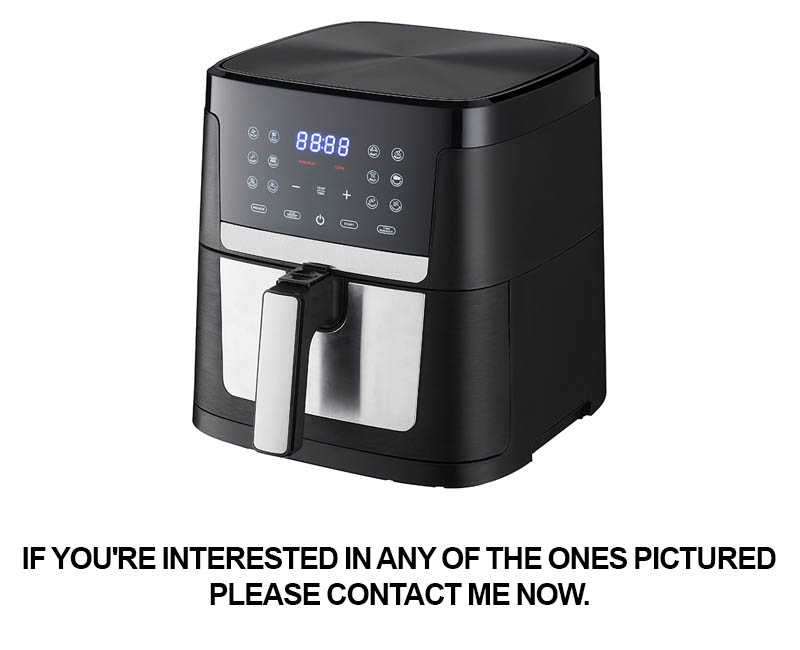
In recent years, the kitchen appliance market has seen a significant shift, with consumers increasingly gravitating towards healthier cooking methods. The air fryer, once a niche product, has emerged as a game-changer, transforming the way we think about fried foods. Let’s delve into the latest market trends and consumer preferences that have propelled the air fryer into the forefront of kitchen technology.
The rise of health consciousness has been a pivotal factor in the air fryer’s popularity. Consumers are now more aware of the impact of fried foods on their health, and the air fryer offers a healthier alternative that still satisfies the craving for crispy, golden-brown snacks. Market research indicates that consumers are actively seeking appliances that align with their dietary goals, leading to a surge in demand for air fryers.
Smart technology integration has become a key trend in the kitchen appliance industry. Air fryers are no exception, with many models now featuring smart controls and connectivity options. Users can control their appliances remotely via smartphones, access recipes through built-in apps, and even monitor cooking progress with real-time updates. This level of convenience and connectivity is resonating with tech-savvy consumers who appreciate the fusion of technology and culinary convenience.
Sustainability is another driving force in consumer preferences. As awareness of environmental issues grows, consumers are looking for appliances that are not only efficient but also eco-friendly. Air fryers, with their energy-saving capabilities and the reduction in the need for oil compared to traditional frying methods, are seen as more sustainable options. Manufacturers are responding by producing air fryers with recyclable materials and energy-efficient designs.
The customization of cooking functions has become a significant selling point. Modern air fryers come with a variety of settings, allowing users to achieve different levels of crispiness, temperature control, and cooking times. Consumers are drawn to this versatility, as it means they can cook a wide range of foods, from vegetables to meats, without the need for multiple appliances. The ability to customize cooking profiles also caters to individual preferences and dietary restrictions, making air fryers more inclusive.
Brands are also focusing on the aesthetics of kitchen appliances. The kitchen is no longer just a functional space; it’s a hub for entertainment and socializing. As such, consumers are looking for appliances that not only perform well but also look good. Air fryers are being designed with sleeker lines, brighter colors, and materials that match contemporary kitchen decor. This design-conscious approach is attracting consumers who value aesthetics alongside functionality.
In terms of pricing, there’s a noticeable trend towards premiumization. While entry-level air fryers remain popular, there’s a growing market for high-end models with advanced features. Consumers who are willing to invest in premium appliances are often looking for the best of the best in terms of performance, design, and technology. This trend is driving innovation and competition within the industry.
The globalization of cuisine has also influenced consumer preferences. Air fryers allow for the preparation of dishes from around the world, with the added benefit of healthier cooking methods. This has opened up new markets and consumer bases, as people who enjoy diverse culinary experiences seek out appliances that can cater to their varied tastes.
The rise of social media and influencer marketing has had a profound impact on the kitchen appliance market. Consumers are influenced by what they see on social platforms, and air fryers have become a popular subject of content creation. From cooking challenges to healthy living tips, the air fryer is often featured, further boosting its popularity and influencing consumer preferences.
In conclusion, the market trends in the air fryer industry are multifaceted, driven by health-consciousness, technological advancements, sustainability, customization, aesthetics, premiumization, globalization, and the influence of social media. As these trends continue to shape consumer preferences, the air fryer is poised to remain a staple in modern kitchens for years to come.
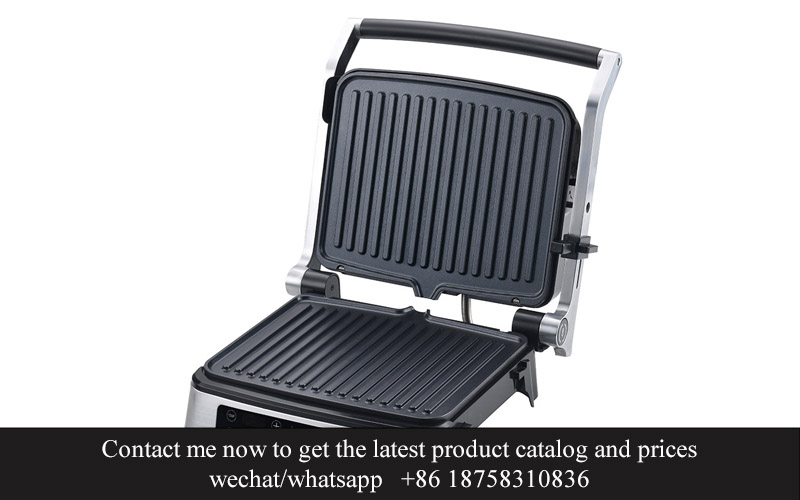
In the world of kitchen appliances, a few innovations have truly reshaped how we cook and live. Among these, the rise of the automated air fryer assembly line stands out as a testament to modern manufacturing prowess. Let’s delve into some notable case studies where such assembly lines have been successfully implemented.
In one such instance, a leading kitchen appliance manufacturer, known for its innovative designs, decided to invest in an automated air fryer assembly line. The goal was to streamline production and improve the efficiency of their air fryer manufacturing process. The result was a significant reduction in the time it took to produce each unit, with minimal errors.
The assembly line featured advanced robotics that meticulously handled each step, from placing the raw components on the line to the final quality check. The robots, programmed with precision, were able to perform tasks like soldering, welding, and assembling parts with incredible accuracy. This level of automation not only reduced the number of human errors but also increased the consistency of the final product.
Another case comes from a mid-sized company that was struggling to keep up with the demand for their air fryers. They were limited by their manual assembly processes, which were time-consuming and prone to delays. After implementing an automated assembly line, the company saw a dramatic improvement. The line was capable of producing a new air fryer every few minutes, with each unit passing through a series of automated quality checks to ensure that only the best products left the factory.
One of the most impressive aspects of these implementations was the integration of IoT (Internet of Things) technology. Sensors and cameras were used to monitor the assembly process in real-time, allowing engineers to quickly identify and rectify any issues that arose. This level of monitoring and control was previously unattainable with manual processes.
In yet another case, a smaller manufacturer decided to upgrade their air fryer production line with an automated system. They chose a modular design that allowed them to expand the line as their product range grew. This flexibility was crucial, as they wanted to be able to adapt quickly to market demands and introduce new features in their air fryers.
The automated assembly lines were not just about increasing production speeds; they also brought about significant improvements in energy efficiency. By automating the process, the manufacturers were able to reduce the amount of energy used, leading to lower operational costs and a smaller carbon footprint.
In terms of labor, the impact was also profound. With the introduction of the automated assembly lines, there was a shift in the role of the workforce. Employees were no longer needed for repetitive, labor-intensive tasks. Instead, they were retrained to manage the robots, maintain the line, and oversee the quality control process. This shift not only improved job satisfaction but also allowed for the creation of new roles focused on innovation and maintenance.
The success of these case studies is a clear indicator of the potential of automated air fryer assembly lines. Not only do they improve the efficiency and quality of production, but they also offer scalability, flexibility, and the potential for significant cost savings. As the kitchen appliance industry continues to evolve, it’s likely that more companies will look to automation to stay competitive and meet the demands of a market that’s always looking for the next big thing in home cooking technology.
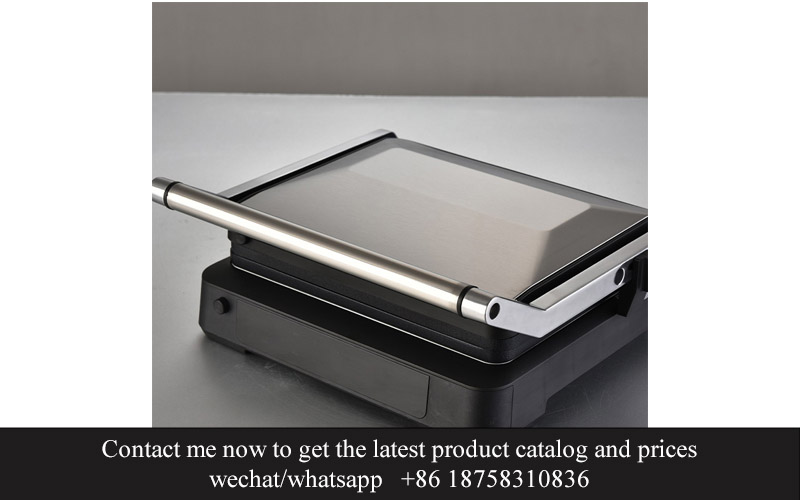
In the realm of automated assembly lines, challenges are as prevalent as the advancements they aim to support. Here’s a look into some of the hurdles faced and the innovative solutions that have been crafted to overcome them:
The Complexity of Integration- Integrating an automated assembly line into an existing manufacturing setup can be a daunting task. The need for precise synchronization between various machines and systems can lead to delays and complications.- One solution involves a phased approach, where the line is gradually introduced and fine-tuned to ensure compatibility with existing infrastructure.
The Skill Gap- The transition to automation often requires a workforce with specialized skills, which can be a significant challenge for companies with a more traditional workforce.- To bridge this gap, some companies invest in comprehensive training programs that not only teach new skills but also help employees understand the value of automation.
Maintenance and Repair- Automated systems are sophisticated and require regular maintenance to prevent downtime and ensure optimal performance.- Companies have developed predictive maintenance software that uses data analytics to identify potential issues before they become problems, reducing the risk of costly breakdowns.
Cost Considerations- The initial investment in automated assembly lines can be substantial, which is a barrier for many businesses, especially smaller ones.- To mitigate costs, some manufacturers opt for modular systems that can be expanded or reconfigured as the business grows, allowing for a more scalable investment.
Supply Chain Disruptions- Automation can make a company more efficient, but it also makes them more vulnerable to disruptions in the supply chain.- To address this, companies are diversifying their supply sources and implementing robust inventory management systems to ensure a steady flow of parts and components.
Cybersecurity Concerns- As assembly lines become more connected, they also become more susceptible to cyber threats.- Solution-wise, companies are investing in advanced cybersecurity measures, including regular security audits and employee training to recognize and respond to potential breaches.
Regulatory Compliance- The introduction of new technologies must comply with various regulations, which can vary by region and industry.- To navigate this, companies often hire compliance experts who stay abreast of changing regulations and ensure that the automated assembly lines meet all necessary standards.
Workforce Adaptation- Employees may resist changes brought about by automation, fearing job displacement.- To address this, companies are focusing on creating a culture of continuous learning and innovation, where workers are encouraged to upskill and embrace new roles within the automated environment.
Resource Allocation- Managing resources efficiently is crucial in an automated assembly line, from energy consumption to the allocation of raw materials.- Implementing smart resource management systems can optimize usage, reduce waste, and lower operational costs.
Quality Control- Maintaining high-quality standards in an automated environment can be challenging due to the complexity of the processes involved.- Solutions include the use of advanced quality control software that can monitor and analyze production data in real-time, ensuring that any deviations are quickly identified and corrected.
Innovation and Continuous Improvement- The pace of technological advancement means that even successful automated assembly lines need to evolve to stay competitive.- Companies are fostering a culture of innovation, encouraging employees to suggest improvements and keeping abreast of new technologies that can enhance their assembly processes.
By addressing these challenges with creative and proactive solutions, companies can harness the full potential of automated assembly lines to drive efficiency, quality, and innovation in their operations.
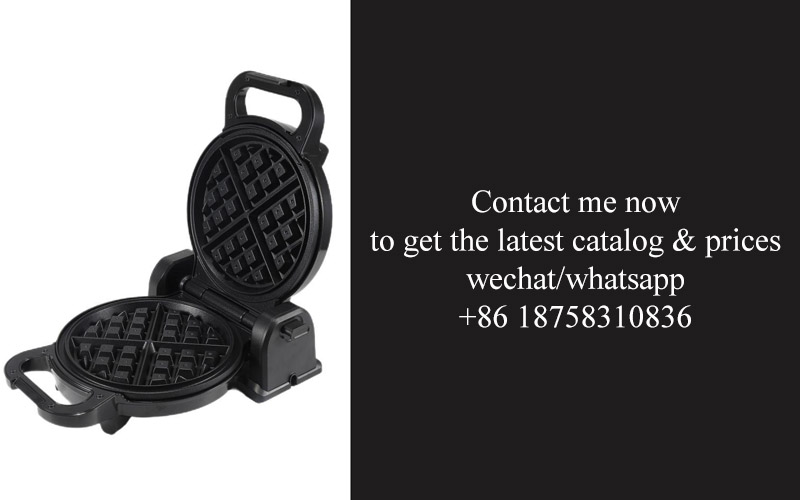
The automated air fryer assembly line has brought about a transformative shift in the manufacturing landscape, streamlining production processes and enhancing the quality of the final product. Let’s delve into the various aspects that make this line a marvel of modern technology.
The integration of robotics and advanced machinery has led to a more efficient assembly process. Precision cutting, welding, and soldering are executed with pinpoint accuracy, ensuring that each component is perfect for its intended use. This level of consistency is nearly impossible to achieve with manual labor alone.
One of the standout innovations is the use of vision systems. These systems inspect components and assembled parts for defects, ensuring that only flawless products move on to the next stage. This not only improves the quality of the air fryers but also reduces the number of defective items that reach the consumer.
Automation has also revolutionized the testing phase. Air fryers are subjected to rigorous performance tests that simulate real-world usage. These tests ensure that each fryer operates at optimal efficiency and safety standards. The speed and thoroughness of these tests would be impractical with traditional methods.
The assembly line is designed to be flexible, allowing for the production of various models and configurations. This adaptability is crucial in a market that demands innovation and variety. New features can be integrated seamlessly into the assembly process without disrupting the overall flow.
In terms of energy efficiency, the automated assembly line is a leader. By optimizing the use of resources and minimizing waste, manufacturers are not only reducing their carbon footprint but also cutting costs. This eco-friendly approach is becoming increasingly important to consumers and businesses alike.
The workforce benefits from this automated assembly as well. Operators are freed from repetitive, physically demanding tasks, allowing them to focus on more complex and creative aspects of the manufacturing process. This shift has led to a more skilled and engaged workforce.
The benefits of an automated air fryer assembly line are clear, but so are the challenges. Implementing such a system requires significant investment in equipment and training. There’s also the need for a robust support infrastructure to maintain the machinery and ensure smooth operations.
One of the primary challenges is the initial setup cost. The high capital expenditure for machinery, software, and infrastructure can be daunting for smaller manufacturers. However, the long-term savings in labor, improved product quality, and increased production capacity can outweigh these initial costs.
Training the workforce to operate and maintain the automated assembly line is another challenge. Employees must be retrained to understand and work with new technologies. This can be a time-consuming process and requires ongoing support from the technology providers.
The complexity of the assembly line can also pose challenges. Diagnosing and fixing issues can be more difficult than with traditional manual assembly lines. Having a dedicated team of technicians and engineers is essential to address these problems promptly.
Another challenge is ensuring the integration of the automated line with existing manufacturing processes. Compatibility issues can arise, and solutions must be found to integrate the new system with the old without causing disruptions.
Despite these challenges, many companies have found innovative ways to overcome them. Partnerships with technology providers have been crucial in ensuring that the automation system is well-integrated and supported. Customization of the system to fit specific production needs has also been a key factor in successful implementations.
The future of air fryer technology looks promising, with continuous advancements in automation and materials science. One trend is the development of smart air fryers that can connect to home networks and provide users with personalized cooking experiences. These fryers could learn from usage patterns and offer tailored settings for different types of food.
Energy efficiency will remain a focus, with the industry aiming for even more sustainable practices. As consumers become more environmentally conscious, manufacturers will need to ensure that their products are not only efficient but also produced with eco-friendly processes.
Another area of growth is in the customization of air fryers. The ability to offer a variety of features and design options will cater to different consumer preferences and market segments. This could include everything from adjustable cooking temperatures to built-in recipe management systems.
Lastly, the integration of health and wellness into the design of air fryers is expected to continue. As people seek out healthier cooking alternatives, air fryers that can provide accurate nutrition information and promote healthier lifestyles will become more popular.
The automated air fryer assembly line is more than just a manufacturing process; it’s a testament to human ingenuity and the relentless pursuit of innovation. As technology continues to evolve, the future of air fryers will undoubtedly bring new possibilities and experiences to kitchen countertops worldwide.

In recent years, the kitchen has undergone a remarkable transformation, becoming a hub of innovation and technology. Appliances that once took up valuable counter space and required manual labor to operate are now sleek, efficient, and largely self-sufficient. One such innovation that has sparked a revolution in home cooking is the air fryer. These compact, health-conscious gadgets have not only changed the way we prepare our meals but have also paved the way for a new era of automated assembly lines. Here’s a glimpse into the future of air fryer technology and the path it’s taking us on.
The air fryer, a game-changer in its own right, has redefined what it means to fry without the guilt. By using a high-speed fan to circulate hot air, it achieves a crispy outer texture with significantly less oil than traditional frying methods. This breakthrough has resonated with consumers who are increasingly seeking healthier alternatives to deep-frying. However, the journey from a simple concept to a market-ready product is a complex one, requiring a sophisticated assembly process.
The automated air fryer assembly line represents the pinnacle of manufacturing efficiency. It’s a marvel of modern engineering, where precision and speed meet to produce high-quality air fryers at a rapid pace. Here’s a closer look at some of the key innovations that have made this possible:
Robotic Assembly: Robots have become integral to the assembly process, handling tasks that were once the domain of human workers. These robots can pick, place, and solder with pinpoint accuracy, ensuring consistency and reducing the risk of errors.
Advanced Automation: The assembly line is equipped with state-of-the-art machinery that can perform multiple tasks simultaneously. This includes automated testing for functionality and quality control, which guarantees that every air fryer meets the highest standards.
Customization: Modern assembly lines are capable of producing air fryers with various features and designs. This flexibility allows manufacturers to cater to diverse consumer preferences and market demands.
Energy Efficiency: Innovations in the assembly line have also focused on reducing energy consumption. By optimizing the use of resources, manufacturers are not only cutting costs but also minimizing their environmental footprint.
The benefits of such an advanced assembly line are manifold. Let’s explore some of the key advantages:
Improved Productivity: The automation of the assembly process significantly increases output. This means manufacturers can produce more units in less time, keeping up with the ever-growing demand for air fryers.
Enhanced Quality Control: Automated testing ensures that every air fryer meets stringent quality standards. This reduces the likelihood of defective products reaching the market.
Cost Reduction: Although the initial investment in an automated assembly line can be substantial, the long-term savings are substantial. Reduced labor costs, lower error rates, and increased efficiency all contribute to a more cost-effective production process.
Scalability: As consumer preferences shift and market demand fluctuates, the automated assembly line can be easily adapted to produce different models and configurations, allowing manufacturers to remain agile and responsive.
The rise of the automated air fryer assembly line is a testament to the power of technology in reshaping the kitchen landscape. But what are the market trends and consumer preferences that are driving this shift?
Market trends indicate a growing preference for healthier cooking methods and convenience. Consumers are looking for appliances that not only help them prepare delicious meals but also do so in a way that is mindful of their health and the environment. Here are some key trends:
Health and Wellness: There’s a clear shift towards healthier eating habits, with an emphasis on low-fat, low-calorie, and low-carb options. Air fryers fit perfectly into this trend by allowing for healthier frying alternatives.
Sustainability: As environmental concerns grow, consumers are increasingly interested in products that are produced sustainably and have a minimal carbon footprint.
Technology Integration: Smart appliances that can be controlled remotely or through voice commands are becoming more popular. Consumers are looking for technology that can make their lives easier and more connected.
Convenience: Time-poor consumers are seeking appliances that can simplify meal preparation, offering quick and easy cooking solutions.
Several case studies have highlighted the success of automated air fryer assembly lines. One such example is the partnership between a leading appliance manufacturer and a cutting-edge robotics company. By integrating advanced robotics and automation, the manufacturer was able to quadruple its production capacity while maintaining high-quality standards. The result was a surge in sales and a strengthened market position.
Another case involves a small startup that took advantage of the latest automation technology to produce a unique line of air fryers with customizable features. By focusing on niche markets and leveraging automation, the startup was able to carve out a space for itself in a crowded market and attract a loyal customer base.
Despite the many benefits, the transition to an automated assembly line is not without its challenges. Here are some of the common hurdles and the solutions that have been implemented:
Initial Investment: The cost of setting up an automated assembly line can be a significant barrier for some manufacturers. However, the long-term savings and increased efficiency often outweigh the initial investment.
Training Employees: Employees need to be trained to work alongside robots and understand the new processes. Investing in training programs and ensuring a smooth transition can help mitigate resistance to change.
Maintenance and Upkeep: Automated systems require regular maintenance to ensure they run smoothly. Establishing a robust maintenance schedule and having a skilled team in place is crucial.
Integration with Existing Systems: Integrating an automated assembly line with existing production facilities can be complex. It requires careful planning and coordination to ensure compatibility and seamless operation.
The future of air fryer technology is bright, with a myriad of possibilities on the horizon. As technology continues to advance, we can expect to see several developments:
Smart Cooking: Air fryers may soon become part of a smart kitchen ecosystem, where they can be controlled through voice assistants or mobile apps. This will offer even greater convenience and customization.
Material Innovations: New materials with better thermal conductivity and durability may be used in the construction of air fryers, improving performance and lifespan.
Health Monitoring: Air fryers could incorporate health monitoring features, such as tracking nutritional information and suggesting meal plans based on dietary needs.
Sustainability: As sustainability becomes a key concern, we may see air fryers made from recycled materials and designed for easy disassembly and recycling at the end of their life cycle.
In conclusion, the automated air fryer assembly line represents a significant step forward in the evolution of kitchen technology. It’s a testament to human ingenuity and the power of technology to improve our lives. As we look to the future, it’s clear that the kitchen is poised to become a healthier, smarter space, where innovation continues to redefine the way we cook and live.